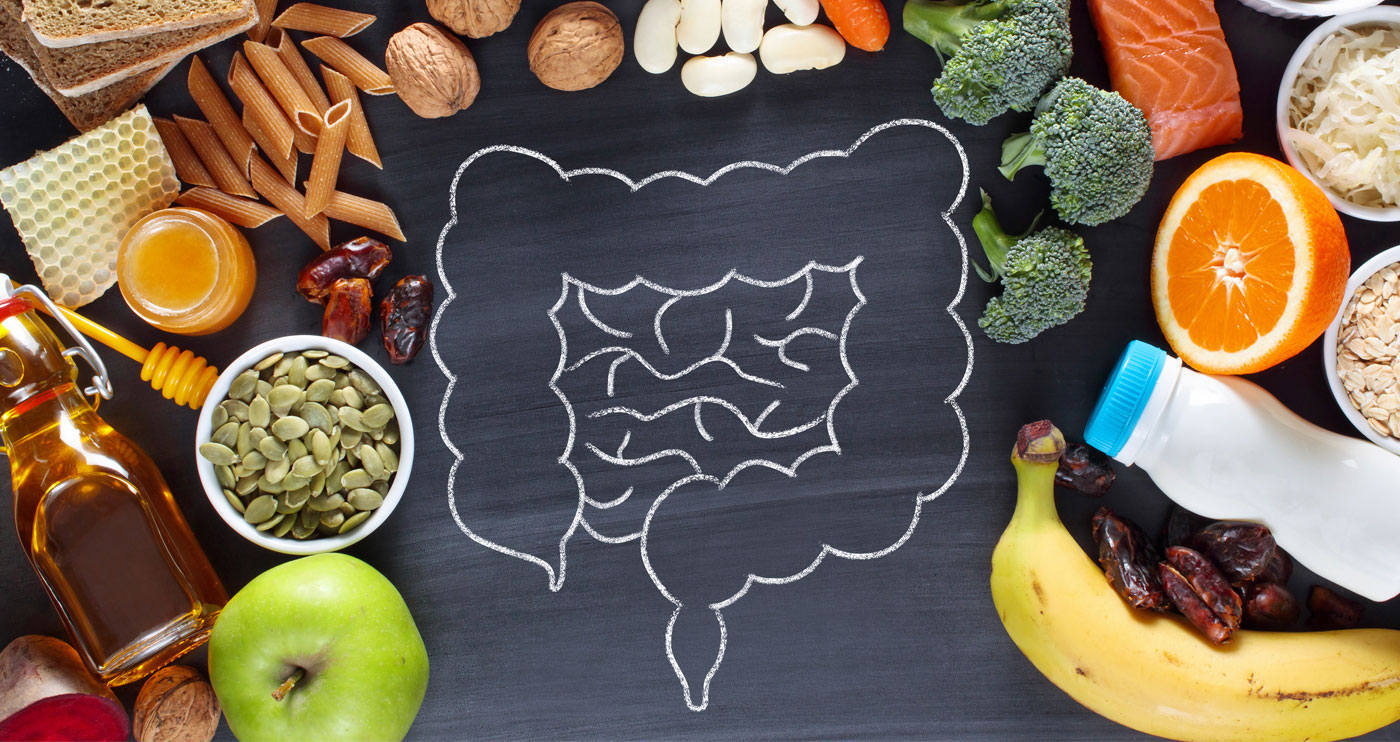
Do you know how much of you is, well, you? Believe it or not, your microbiome makes up a significant proportion of you. So significant, in fact, that your microbiome’s cells outnumber your own body cells by about 10 to 1. If you took all your microbiome’s genes and added them together, they’d have about 200 times the genes in your own cells. With all of this in mind, it’s probably unsurprising to find out that these tiny organisms can have a profound impact on your overall health — including your weight.
How do microorganisms affect your health?
The majority of your body’s microbiome is in your digestive system. There, it helps you absorb nutrients by breaking down compounds that the body can’t and excreting usable material. These bacteria also help modulate your body’s immune response and can even impact your mental health. (Your intestines actually have more receptors for certain neurotransmitters than your brain does!)
These bacteria can also help or hinder weight loss, which means that your weight may, in part, serve as a marker for how healthy your microbiome is.
How does your microbiome impact your weight?
Your microbiome is made up of over 1,000 different species of bacteria. Not all of them eat the same things, so the foods we eat can favor certain populations of microorganisms over others. One phylum of bacteria, the Firmicutes (from the Latin words for “strong skin,” due to their tough cell walls), is pretty efficient at helping the body store energy. They also thrive on diets high in saturated fat. So, while fat does pack more calories per gram than carbs or protein, Firmicutes appear to contribute significantly to putting on weight.
By contrast, diets lower in saturated fat and higher in fiber favor populations of other bacteria that aren’t as good at packing away energy. As a result, it can become easier to lose weight.
Energy storage isn’t the only way that your microbiome can affect your weight. When your gut bacteria want food, they appear to be capable of altering hunger signals and eliciting cravings.
How can you use your microbiome to your advantage?
The best way to benefit from your gut bacteria is to foster diversity. When you have a wide range of microorganisms, it lessens the likelihood that one type will dominate. That means that you may be less likely to experience cravings since one kind of bacteria won’t be able to “outvote” the others. It also means that you’re more likely to have a favorable balance of bacteria that are efficient at energy storage, and those that aren’t.
A diverse gut biome comes from a diverse diet. When you eat a wide range of foods, including enough fiber, you encourage a wide variety of beneficial microorganisms to grow.
What foods can help improve your microbiome?
Establishing a healthy, diverse, thriving microbiome comes in several stages. First, you need to get the microorganisms from somewhere. You also need to feed them the foods they need for optimum health, which means lots of fiber and a class of nutrients calls “prebiotics.”
These foods can help:
Yogurt or kefir
Yogurt and kefir are made of milk that has been worked on by special strains of Lactobacillus (and may include Streptococcus thermophilus). The bacteria live on the nutrient-rich dairy, and, when you eat it, transfer to your intestines where they continue to proliferate. For best results, look for unsweetened yogurt and kefir that says it has “live and active cultures.” The higher the number of cultures, the better.
Kimchi, sauerkraut, and other fermented foods
Like yogurt, these foods are produced using beneficial bacteria. If you’re vegan, allergic to dairy, or lactose intolerant, these may be a better option than yogurt or kefir. Look for foods that have live and active cultures or try to make your own.
Prebiotics like fructans and oligosaccharides
Their names are complicated, but fortunately, they aren’t. Prebiotics are nutrients that can’t be digested by humans but serve as food for bacteria. They still end up benefitting humans by stimulating the growth of their microbiome. Foods like whole grains, bananas, broccoli, cauliflower, onions, asparagus, and garlic are sources of prebiotics.
Fiber
Various types of fiber help feed bacteria, but also provide a healthy environment for them to live in. Fiber’s also helpful for regulating blood sugar, improving blood lipids, and correlates with a reduced risk in aging-related illnesses. Even though humans can’t digest fiber, it’s a vital component of a healthy diet.
For some people, triggering weight loss might be as simple as shifting the balance of beneficial microorganisms in their digestive systems. Some species are good at helping the body store energy as fat, while others help the immune system, or even improve mood. Eating a varied diet is the best way to develop a diverse microbiome, and this means eating lots of probiotics, prebiotics, and sources of fiber.